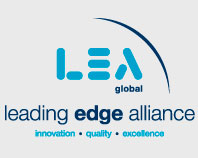Effective for tax years beginning after December 31, 2021, the Tax Cuts and Jobs Act (“TCJA”) of 2017 changed the treatment of Internal Revenue Code (“IRC”) Section 174 costs requiring that Research and Development (R&D) costs be capitalized and amortized over a period of 5-years for domestic expenses and 15-years for offshore expenses. Although many hoped that this unfavorable provision from the TCJA would be postponed or removed prior to December 31, 2021, the change remains in effect in 2022.
In addition to a higher tax burden in the initial years, taxpayers are now faced with the burden of tracking their IRC Section 174 R&D costs. Many taxpayers do not specifically track research costs since IRC Section 174 previously allowed taxpayers to deduct R&D expenses in the year incurred. The change also requires capitalization and amortization of expenses related to software development. Previously, Revenue Procedure 2000-50 allowed taxpayers to either expense or amortize software development expenses over a shorter time frame.
Can I Use My Expenses that Qualify Towards the R&D Tax Credit as Amortizable R&D Costs?
Companies that currently claim the research tax credit under IRC Section 41 may wonder if they can use these calculations to compute amortizable R&D costs. While this may be a good starting point, amortizable R&D costs have a much broader definition than qualifying research tax credit costs under IRC Section 41.
Qualified amortizable R&D costs include any on-shore activity, off-shore activity or expenses incurred while discovering new information or eliminating uncertainty including the development of new products or processes. IRC Section 41, however, narrows the definition of qualified amortizable R&D costs for the research tax credit with additional requirements, notably that activities must be US-based, technological in nature, intended to be useful in the development of a new or improved business component of the taxpayer, constitute a process of experimentation and be related to a permitted purpose. In other words, while all expenses that qualify for the research tax credit must be qualifying amortizable R&D costs under IRC Section 174, qualifying research tax credit expenses exclude key costs that must be included for IRC Section 174.
IRC Section 41 (research tax credit) Expenditure:
- Direct research expenses including wages, supplies used and consumed in the R&D process, contractor expenses and the cost of renting cloud space for development purposes
- US-based only
Additional qualifying amortizable R&D (IRC Section 174) Expenses that are excluded from qualifying research tax credit expenditures:
- Indirect R&D expenses including facility costs, costs subject to depreciation and costs of obtaining a patent
- Off-shore R&D expenses
Beginning in 2022, taxpayers who claim the research tax credit must consider and track additional expenses outside its scope and determine if these expenses meet the definition of qualifying amortizable R&D costs under IRC Section 174. Moreover, the new requirement reaches far beyond companies that have historically claimed the research tax credit. This is because taxpayers may not have enough R&D expenses to warrant a research tax credit study, may only have indirect or offshore R&D expenses or may be in net operating losses, thereby resulting in no benefit to calculating the credit. These companies will need to start tracking and analyzing their R&D expenditures for the first time.
Impact on the R&D Tax Credit
While changes to IRC Section 174 do not impact the research tax credit directly, the new amortization requirements may incentivize taxpayers to increase their US-based R&D activities, since these expenses may be amortized over 5-years rather than the 15-year requirement for foreign R&D expenses. This change would increase the expenses eligible for the research tax credit. Additionally, many taxpayers may realize they have more qualified expenses than expected as they begin tracking their R&D costs, making it worthwhile to consider the research tax credit.
Notably, the tax code provides unique treatment to R&D costs in a few other areas such as sourcing of income for international purposes. Thus, there are additional benefits to properly capturing and identify such costs.
Contact Us
Bennett Thrasher has a dedicated team of advisors to assist you in understanding R&D costs, as well as claiming and documenting the research tax credit. If you have any questions, please contact Nina Desai or Julie Hagan by emailing [email protected].





